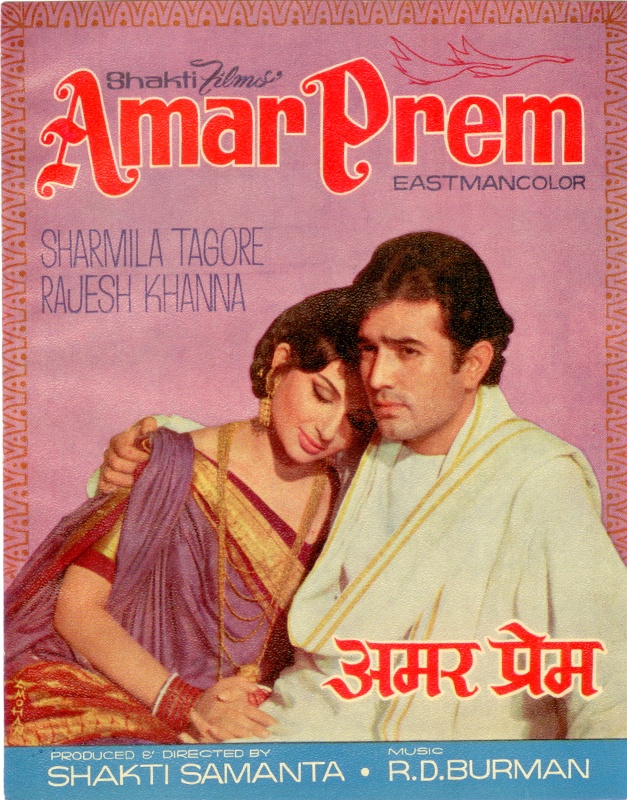Origins of Film Industry Nicknames
National and Regional Influences
The film industry has always been a reflection of the diverse cultures and languages that exist around the world. Over time, various regions have developed their own unique nicknames for their film industries, which not only distinguish them from one another but also provide insight into their distinct histories, cultural influences, and contributions to the global cinema landscape.
One such example is Bollywood, India’s largest film industry, which is named after a combination of Bombay (now Mumbai) and Hollywood. This nickname was coined in the 1970s by the American press to describe the vibrant and energetic nature of Indian films. Bollywood movies are known for their elaborate song-and-dance numbers, melodramatic storylines, and over-the-top production values.
Another prominent example is Tollywood, which refers to the Telugu film industry in Andhra Pradesh and Telangana, India. This nickname was derived from the city of Madras (now Chennai), where many Telugu films were produced. Tollywood movies are famous for their massy entertainers, intense action sequences, and emotional drama.
Meanwhile, Pollywood is a colloquial term used to describe the Punjabi film industry in Punjab, India. This nickname was popularized by the Punjabi diaspora community around the world. Pollywood movies often feature energetic dance numbers, romance, and comedy, with an emphasis on social issues affecting the Punjabi community.
The name “Hollywood” itself is a prime example of how a film industry’s nickname can shape its identity. In the early 20th century, filmmakers from New York City migrated to Los Angeles in search of better weather and more accessible locations for filmmaking. Over time, Los Angeles evolved into the center of the American film industry, with Hollywood becoming synonymous with cinema itself.
African countries also have their unique film industry nicknames. For instance, Ghana’s film industry is often referred to as “Gollywood,” while Kenya’s is known as “Kenywood.” These terms reflect the growing popularity and recognition of African filmmaking within the global cinematic community.
Regional influences can be seen in various film industries around the world. In Latin America, telenovelas – long-running soap operas that originated in Mexico – have become incredibly popular across the region and beyond. Similarly, the Arab world has its own distinct brand of filmmaking, often focusing on melodramatic storylines, romance, and social issues affecting the Middle East.
National influences also play a significant role in shaping film industry nicknames. Japan’s film industry is known as “J-pop cinema” due to the country’s unique blend of pop culture, anime, and manga influences. China’s film industry has undergone rapid growth in recent years, with the mainland market now producing blockbusters that compete globally for attention.
These examples illustrate how regional and national influences have shaped the diverse world of film industry nicknames. As cinema continues to evolve and adapt to changing global tastes and trends, these distinct identities will continue to reflect the rich cultural heritage of various nations and regions around the world.
The terms “Bollywood,” “Pollywood,” and “Tollywood” are not universally recognized as official film industry nicknames, but rather colloquialisms used to describe the popular cinema of specific regions. For instance, “Bollywood” refers specifically to the Indian film industry based in Mumbai.
The origins of film industry nicknames can be attributed to the unique cultural and geographical characteristics of each region.
For instance, “Bollywood” emerged as a colloquialism to describe the Indian film industry based in Mumbai, which is one of the largest centers for Hindi-language film production.
The term “Pollywood” is often used to refer to the Punjabi film industry based in Chandigarh and other cities in the Punjab region of India and Pakistan.
Tollywood, on the other hand, refers to the Telugu film industry based in Hyderabad, which is one of the major centers for Telugu-language cinema.
Nicknames by Region
- Bollywood: Indian film industry based in Mumbai, known for producing primarily Hindi-language films.
- Pollywood: Punjabi film industry based in Chandigarh and other cities in the Punjab region of India and Pakistan.
- Tollywood: Telugu film industry based in Hyderabad, known for producing predominantly Telugu-language cinema.
Other notable film industry nicknames include:
- Kollywood: Tamil film industry based in Chennai, the capital city of the Indian state of Tamil Nadu.
- Mollywood: Malayalam film industry based in Kochi and Thiruvananthapuram, the capital cities of Kerala and Trivandrum respectively.
These nicknames reflect the unique cultural identities of each region and have become integral parts of their respective film industries.
Origins of Nickname Formation
- The names are derived from a combination of city names and the local language or dialect spoken in that area.
- The process often begins with the name of the city where the industry is based, followed by the suffix “-wood”, which is thought to be inspired by the Hollywood film industry in Los Angeles, California.
These nicknames have become widely recognized and used within their respective industries and have contributed to the growth and development of local cinema globally.
Industry Nicknames Beyond Bollywood
South Asia and Southeast Asia
The term “Bollywood” has become synonymous with the Indian film industry, but it’s not alone in using industry-specific nicknames. In fact, several other film industries around the world have adopted their own unique monikers that reflect their regional identity and cultural heritage.
One of the most well-known examples is Pollywood, which refers to the Punjabi film industry based in Punjab, India. Pollywood has gained significant popularity in recent years with the success of films like “Carry On Jatta” and “Dabangg 2”.
Another notable example is Tollywood, which is a nickname for the Telugu film industry based in Andhra Pradesh and Telangana, India. Tollywood has produced some of the biggest hits in recent years, including films like “Baahubali” and “RRR”.
Malayalam cinema, also known as Mollywood, is another example of a regional film industry that has gained recognition globally. Mollywood has produced critically acclaimed films like “Premam” and “Bangalore Days”, which have won numerous awards.
In Southeast Asia, the term Sinema Malaysia (or Malay film) refers to the Malaysian film industry, while Sinema Indonesia is used for the Indonesian film industry. These terms reflect the cultural and linguistic diversity of the region.
Other notable examples include Kollywood for the Tamil film industry in India, Hallyuwood for the South Korean film industry, and Cantopop for the Hong Kong music and film scene. Each of these industry-specific nicknames reflects a unique blend of local culture, language, and identity that sets them apart from other global industries.
These regional film industries have carved out their own niche in the global market, offering something distinct to audiences around the world. With globalization, it’s not uncommon for international co-productions to emerge, bringing together artists and technicians from different countries and regions. However, even as globalized cinema continues to evolve, these industry-specific nicknames continue to thrive, serving as a testament to the enduring power of cultural identity in shaping our cinematic experiences.
Moreover, regional film industries also play a vital role in preserving local languages, cultures, and histories, which may otherwise be threatened by globalization. For instance, some films in Mollywood are shot entirely in Malayalam language, ensuring that this beautiful and expressive language continues to thrive on the big screen.
As we explore these various regional film industries beyond Bollywood, it becomes clear that there’s much more to global cinema than just Hollywood blockbusters and Bollywood masalas. These unique industry-specific nicknames offer a fascinating glimpse into the diverse cinematic cultures of Asia and beyond, reminding us that, even in an increasingly interconnected world, local identity and cultural heritage continue to thrive on the big screen.
In addition to India’s “Bollywood,” South Asian countries like Bangladesh, Sri Lanka, and Nepal have their own distinct film industries. The Pakistani film industry is often referred to as the Lollywood (Lahore), while the Bangladeshi film industry has its own unique identity.
The film industry in South Asia has a rich cultural heritage, with each country having its own distinct identity. While India is known for “Bollywood,” other countries have their own nicknames that reflect their unique characteristics.
In Pakistan, the film industry is often referred to as Lollywood (Lahore), which refers to the city of Lahore, where many Pakistani films are produced. The name reflects the city’s status as a hub for the film industry in Pakistan.
Bangladesh also has its own unique identity within the South Asian film industry. Although it does not have a widely recognized nickname like Bollywood or Lollywood, Bangladeshi cinema is known for its distinctive style and themes that reflect the country’s cultural heritage.
In Sri Lanka, the film industry is often referred to as “Sulakshana” or “Ceylon Cinema,” which was used in the early days of the industry. However, modern-day Sri Lankan cinema has been influenced by international trends and styles, making it harder to pinpoint a specific nickname.
Nepal’s film industry is also growing rapidly, with many Nepali films gaining recognition both locally and internationally. Although it does not have an official nickname like Bollywood or Lollywood, Nepali cinema has its own unique style that reflects the country’s cultural heritage.
Some notable examples of Industry Nicknames Beyond Bollywood
- Pollywood (Punjab): This is a colloquial term used to describe the film industry in Punjab, which includes Indian films produced in the state as well as Punjabi-language films.
- Tollywood (Telugu): This nickname refers to the Telugu-language film industry based in Hyderabad, India. It is one of the largest and most popular film industries in India, producing many blockbuster films every year.
- Kollywood (Tamil): Similar to Tollywood, Kollywood refers to the Tamil-language film industry based in Chennai, India. It has produced some of the most iconic films in Indian cinema, including movies starring Rajinikanth and Kamal Haasan.
These are just a few examples of the many industry nicknames found around the world. Each one reflects the unique characteristics and contributions of its respective film industry to global cinema.
North America and Beyond
Regional Film Industries
The film industry has become an integral part of global culture, with various regions having their own unique styles and productions. North America, in particular, is home to several thriving regional film industries, each contributing its own flavor to the international cinema landscape.
On one end of the spectrum lies Hollywood, which remains a behemoth in the global entertainment industry. With its rich history and unparalleled resources, Hollywood continues to churn out blockbuster films that captivate audiences worldwide.
Beyond Hollywood’s borders lies Nollywood, Nigeria’s thriving film industry, known for its low-budget productions and high production rates. This self-sustaining ecosystem is fueled by a vibrant domestic market, where films are often released straight-to-video and garner significant profits.
Further east lies Bollywood, India’s largest and most iconic film industry, renowned for its grand musicals, elaborate dance numbers, and melodramatic storylines. The term ‘Bollywood’ itself has become synonymous with Indian cinema worldwide.
In the Americas, Tollywood is the nickname given to Telugu-language films produced in Andhra Pradesh and other parts of southern India. This industry has gained immense popularity globally for its high-quality productions and engaging storytelling.
Pollywood, a colloquial term used to refer to Punjabi-language films originating from the Punjab region in northern India, is another regional film industry gaining recognition internationally for its authentic portrayals of rural life, rich cultural heritage, and strong social commentary.
Other notable regional film industries worth mentioning include Cine-Mexico from Mexico, which boasts a diverse range of genres, including dramas, comedies, and action films; NACF (National Association of Caribbean Film) from the Caribbean region, focusing on local issues, traditions, and vibrant cultural diversity.
As global connectivity increases, these regional film industries will continue to play an essential role in shaping international cinema by providing unique perspectives, authentic storytelling, and fresh talent to the world. They are not only showcasing their distinct artistic visions but also participating in a broader dialogue about culture, identity, and human experiences that resonate with audiences worldwide.
The film industries of various countries have their own distinct characteristics, with terms like Hollywood in the United States, Nollywood in Nigeria, and Cinephile for Chinese cinema.
The film industry has undergone significant growth and transformation over the years, with various regions and countries developing their unique characteristics. In North America, the term “Hollywood” is synonymous with the American film industry, which produces a wide range of movies, from blockbuster action films to critically acclaimed art-house cinema.
However, Hollywood’s influence extends beyond North America, as it has become a cultural phenomenon that is recognized and emulated around the world. Many countries have developed their own unique styles and genres, often inspired by Hollywood but with distinct local flavors.
In India, for example, the film industry based in Mumbai is known as Bollywood, which produces some of the most successful and popular films globally. The term “Bollywood” was coined in the 1970s to describe the Indian film industry’s unique blend of music, dance, and drama.
Other notable film industries from around the world include:
- Pollywood: Based in Punjab, India, Pollywood produces films that cater to a Punjabi-speaking audience, often with a focus on romance, comedy, and social issues.
- Tollywood: Based in Bengaluru, India, Tollywood is the second-largest film industry in India, producing movies primarily in Telugu and other regional languages.
- Hallyuwood: A term used to describe the Korean film industry’s growing global presence, with films like “Parasite” winning international accolades.
- Nollywood: Based in Nigeria, Nollywood produces low-budget but highly popular films that cater to a local audience, often with a focus on drama and social issues.
- Cinephile: A term used to describe the Chinese film industry’s growing global presence, with films like “The Wandering Earth” gaining international recognition.
These film industries have not only provided entertainment but also played a significant role in shaping cultural identity and promoting social change. As globalization continues to shape the world we live in, these regional film industries will continue to evolve and adapt, reflecting the diverse perspectives and experiences of their respective audiences.
The popularity of streaming platforms has further democratized access to films from around the world, making it easier for global audiences to discover and appreciate local content. This has led to a surge in collaborations between international filmmakers, resulting in innovative and culturally relevant productions that showcase the diversity of human experience.
- 11 Most Charming Cities In Northern California - September 3, 2024
- 10 Largest Cities In Wisconsin - September 3, 2024
- 10 Most Beautiful Ozark Mountain Towns - September 3, 2024





